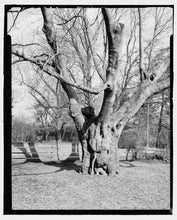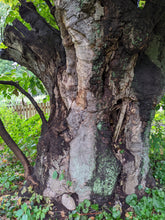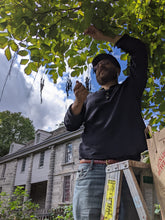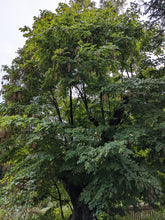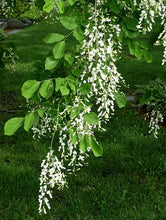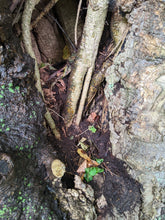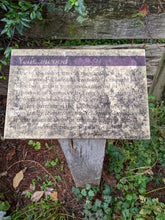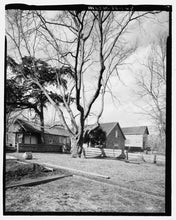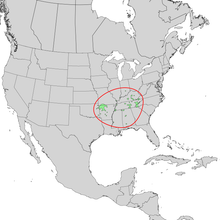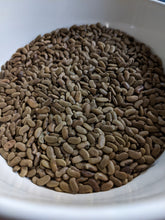"Grandmother" Yellowwood (Bartram's Garden)
Regular price
$5.00
Sale
Cladrastis kentukea
Origin: Central Tennessee (via Philadelphia)
Improvement status: Wild
Seeds per packet: ~10
BOTANICAL SAMPLE - NOT GERMINATION TESTED
Life cycle: Perennial
Yellowwood is one of the rarest native trees in North America, and also one of the most spectacular. It occurs mainly on the limestone cliffs of Kentucky, Tennessee, and western North Carolina, with a few scattered populations in Mississippi, Alabama, Arkansas, Oklahoma, Missouri, Illinois, Indiana, and Virginia. It is found in most abundance in Missouri and around Nashville, Tennessee. Yet it is hardy to Zone 4 and well-adapted to a range of soils and growing conditions. Its delicate cascading racemes of beautiful and fragrant white flowers — reminiscent of wisteria or black locust, but looser and longer, up to 15 inches — make it a much sought-after ornamental tree in places far beyond its range. We're told it's even being recommended as a street tree in the Twin Cities these days! But it's not only gorgeous: it's also quite useful thanks to its dense, hard wood — especially its beautiful yellow heartwood — used for furniture, musical instruments, gunstocks, and decorative arts. The wood yields a clear yellow dye as well. Additionally, its flowers are beloved by a wide range of beneficial insects, especially bees and butterflies.
These seeds come from one particular very special and well-known yellowwood tree growing at the historic Bartram's Garden in southwest Philadelphia. One of the oldest trees in the garden — the oldest botanical garden in the United States — the yellowwood growing at Bartram's first arrived in Philadelphia as a seed sent to William Bartram (son of John Bartram) by the French botanical explorer Andre Michaux in 1796. Michaux collected seeds from a tree in central Tennessee. Records indicate that the Bartram's tree was planted in 1805, and it has provided shade and inspiration to visitors of the garden for over two centuries since. A large storm destroyed much of the tree in 2010, but it has since grown back so robustly that it looks almost as if nothing happened. Most impressively, as with many old trees, most of the ancient core of the "Grandmother" yellowwood has rotted away, but unlike most trees this yellowwood has been growing roots inside of itself for many years now! Some of these roots, which are five or six feet or more above ground level, are now nearly two inches in diameter (see photo). We've never seen anything like it.
As with most yellowwoods, "Grandmother" doesn't flower every year, but in 2023 flowered profusely. Mandy Katz, lead gardener and land manager at Bartram's, says she's only seen it flower so brilliantly one other time in nearly twenty years. EFN co-founder Nate Kleinman — visiting Bartram's twice a month throughout the year as a student in the excellent herbalism class called "Build Your Home Apothecary" — also noticed the unusually dense flowers and asked Mandy if he could harvest some seeds for the EFN catalogue. Happily, Mandy agreed — and told Nate she was already planning to harvest some to offer seeds for sale in Bartram's gift shop. We decided together to refer to the tree as the "Grandmother" yellowwood in honor of the multiple generations of offspring from the tree that can be found growing nearby. We have a limited quantity of these singular seeds, and it's unlikely we'll have so many again for many years, so don't miss out!
In gratitude for their maintaining the "Grandmother" yellowwood and so many other amazing plant friends, and for their willingness to let us collect and offer these special seeds, Bartram's will receive 25% of the packet price of every packet we sell.
GROWING TIPS: Seeds respond best to some treatment to break dormancy — this can mean pouring nearly-boiling water over them, then soaking for 24 hours or stratifying in cool moist sand or peat for 90 days, or sowing in the fall directly in place. Some other methods are described in detail here. Yellowwood trees can grow to roughly 60 feet tall, with a spread of up to 40 feet, but they will fill a smaller canopy space if that's all they're given.
NOTE: Photo of yellowwood flowers is a public domain photo from Mt. Auburn Cemetery in Cambridge, Mass (we can't seem to find our photos of the "Grandmother" yellowwood in bloom).











